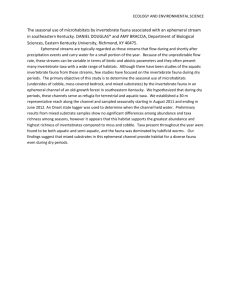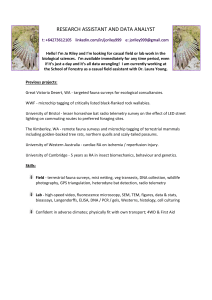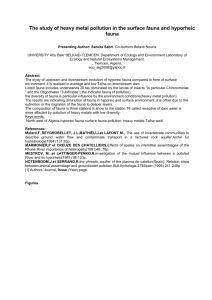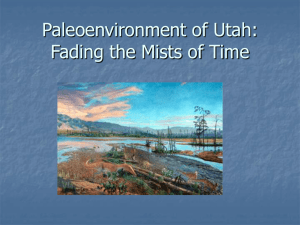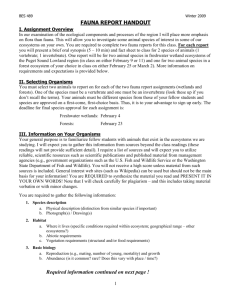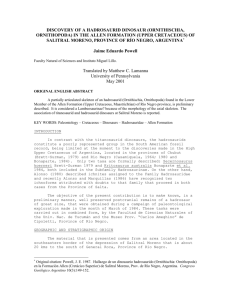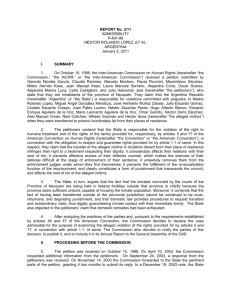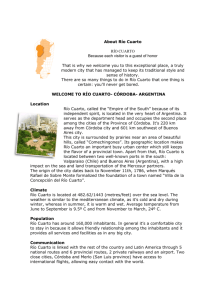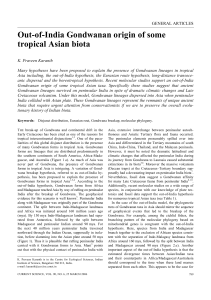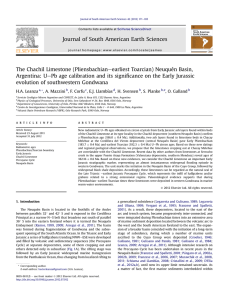Particularities of the continental turtle fauna of the Cretaceous of
advertisement
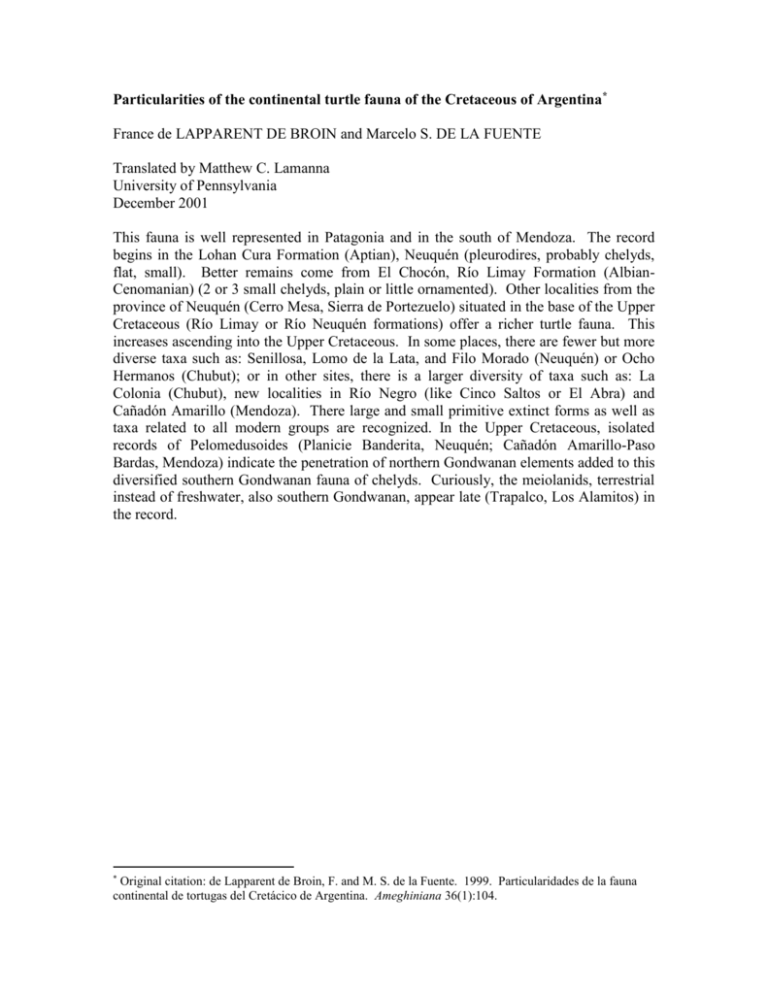
Particularities of the continental turtle fauna of the Cretaceous of Argentina* France de LAPPARENT DE BROIN and Marcelo S. DE LA FUENTE Translated by Matthew C. Lamanna University of Pennsylvania December 2001 This fauna is well represented in Patagonia and in the south of Mendoza. The record begins in the Lohan Cura Formation (Aptian), Neuquén (pleurodires, probably chelyds, flat, small). Better remains come from El Chocón, Río Limay Formation (AlbianCenomanian) (2 or 3 small chelyds, plain or little ornamented). Other localities from the province of Neuquén (Cerro Mesa, Sierra de Portezuelo) situated in the base of the Upper Cretaceous (Río Limay or Río Neuquén formations) offer a richer turtle fauna. This increases ascending into the Upper Cretaceous. In some places, there are fewer but more diverse taxa such as: Senillosa, Lomo de la Lata, and Filo Morado (Neuquén) or Ocho Hermanos (Chubut); or in other sites, there is a larger diversity of taxa such as: La Colonia (Chubut), new localities in Río Negro (like Cinco Saltos or El Abra) and Cañadón Amarillo (Mendoza). There large and small primitive extinct forms as well as taxa related to all modern groups are recognized. In the Upper Cretaceous, isolated records of Pelomedusoides (Planicie Banderita, Neuquén; Cañadón Amarillo-Paso Bardas, Mendoza) indicate the penetration of northern Gondwanan elements added to this diversified southern Gondwanan fauna of chelyds. Curiously, the meiolanids, terrestrial instead of freshwater, also southern Gondwanan, appear late (Trapalco, Los Alamitos) in the record. * Original citation: de Lapparent de Broin, F. and M. S. de la Fuente. 1999. Particularidades de la fauna continental de tortugas del Cretácico de Argentina. Ameghiniana 36(1):104.
